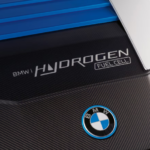A circular economy is inspired by living systems, meaning there is no such notion as waste. One species’ waste is another’s food, and accordingly, every waste piece should be a resource for the next production step.
 Business models based on the circular economy approach is a possible alternative that can reduce resource intensive production; even Google started using this definition for its business model optimization.
Business models based on the circular economy approach is a possible alternative that can reduce resource intensive production; even Google started using this definition for its business model optimization.
Development of the new technology shortens the product lifecycle significantly. So, it seems very logical that we just need to decouple valuable and long-lasting materials from the previous product that would be in the traditional system identified as waste, and re-use it in the production of the new technologically updated version ensuring as well the same quality standard.
Currently the most advanced phone producer is the Dutch company FairPhone. The idea behind the Fairphone 2 (the company’s second released model) is to empower users to take ownership of their product/phones and offer easy options for maintenance. The company offers an ecosystem around the phone that supports long-lasting use, first-hand or second-hand.
The phone is designed as the module system that simplifies the maintaining and recycling process and basically aims that the owner can exchange each model by themselves.
Virtually all of the materials (98%) used to make the ARA chair are recyclable.
Another industry that started embracing circular economy principles is fashion and fabric production. Currently more and more fashion brands, including Adidas, Nike, and Timberland, launched clothing lines from recycled PET bottles and even marine plastic waste.
Despite the straightforward logic, the challenge remains significant to rethink and implement circular design in the manufacturing process as it adds a new stage in the product lifecycle: collection, meaning the return and collection point of these products.
Reference- Cleantechnica, WWF, Ellen MacArthur Foundation






